New York, NY - Memor Museum’s latest exhibition, “Sanxingdui Encounter,” brings the wonders of ancient China’s Bronze Age site—Sanxingdui—to New York City, merging digital technology with historical artifacts. Through 1:1 replicas from the Sanxingdui Museum collection, ultra-high-definition 12k technology, AI interaction, and VR immersion, Sanxingdui’s mysterious relics are now on display in an immersive, modern exhibition that brings viewers closer than ever to a civilization dating back over 3,000 years. We sat down with Wennan (Willa) Ao, Director of Memor Museum and Chief Curator of this exhibition, to discuss the concept behind “Sanxingdui Encounter” and the museum’s unique vision.
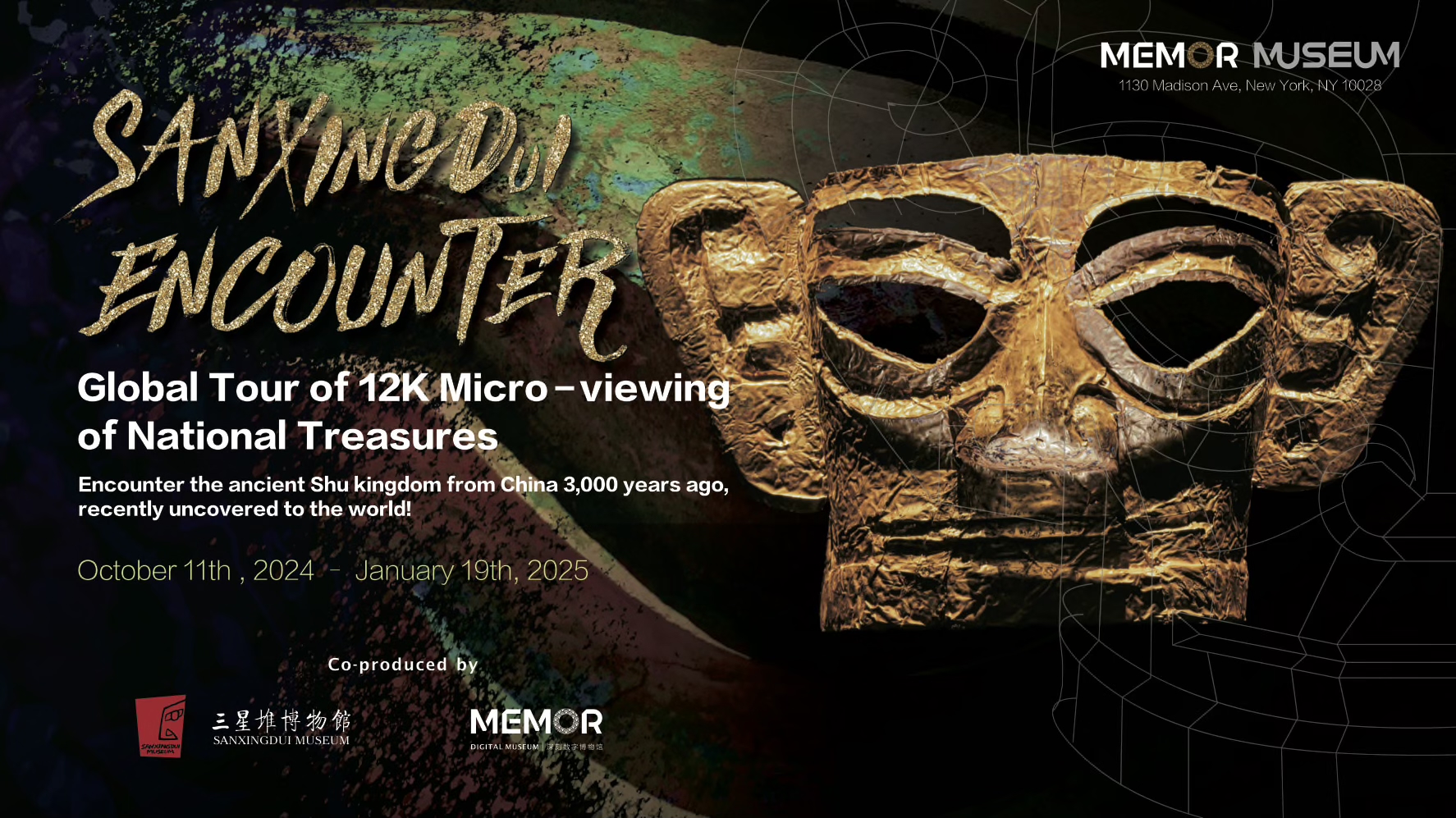
Poster for Sanxingdui Encounter: A Global Tour of 12k Micro-viewing of National Treasures (New York). Image Courtesy of Memor Museum.
Q: Willa, it’s a pleasure to have you with us! Could you tell us how the idea for “Sanxingdui Encounter” came about?
Willa: The concept for this exhibition began with our fascination with the recent archaeological discoveries at Sanxingdui. In 2021, six new sacrificial pits were uncovered at the site, yielding a treasure trove of artifacts that have captivated archaeologists around the world. The mysterious figures and unique craftsmanship of these objects created a major archaeological sensation. As an institution committed to cultural preservation and promotion, we felt it was important to showcase these incredible artifacts in a way that respects their historical significance and makes them accessible to a global audience.
We partnered with Sanxingdui Museum to bring this exhibition to life. Our goal was to protect the artifacts by digitizing them in high fidelity, which is an essential step in preserving their details for future studies. Fortunately, a media team from China’s CCTV recorded the entire archaeological process over eight months, capturing every milestone moment of excavation. These recordings became the foundation of our exhibition, allowing us to bring Sanxingdui’s rich history to life while safeguarding the physical artifacts, which are very delicate.
Q: Why did you choose to use 12K ultra-high-definition technology, and what makes it special for this exhibition?
Willa: The 12K technology we used is truly groundbreaking. We didn’t want to create just an animated representation, but, rather, we wanted to capture the finest details of these artifacts, down to the smallest traces and textures. With 12K resolution, we’re able to reveal details that are invisible to the naked eye. During our digitalization process, for instance, we discovered small carvings on jade artifacts that included figures, like bronze humanoid images, which had not been noticed during previous restorations.
Another striking discovery was the layered assembly of the ceremonial altar, which was revealed through our 12K lens to have intricate joints and assembly marks. At Sanxingdui, it was remarkable to see such intricate bronze casting and assembly work in a civilization from 3,000 years ago, especially as this type of craftsmanship differs greatly from the single-piece casting techniques seen in other contemporaneous civilizations in the Central Plains. These details are invaluable for researchers and archaeologists alike, and the technology allows visitors to appreciate the sophistication and ingenuity of the Shu people’s craft.
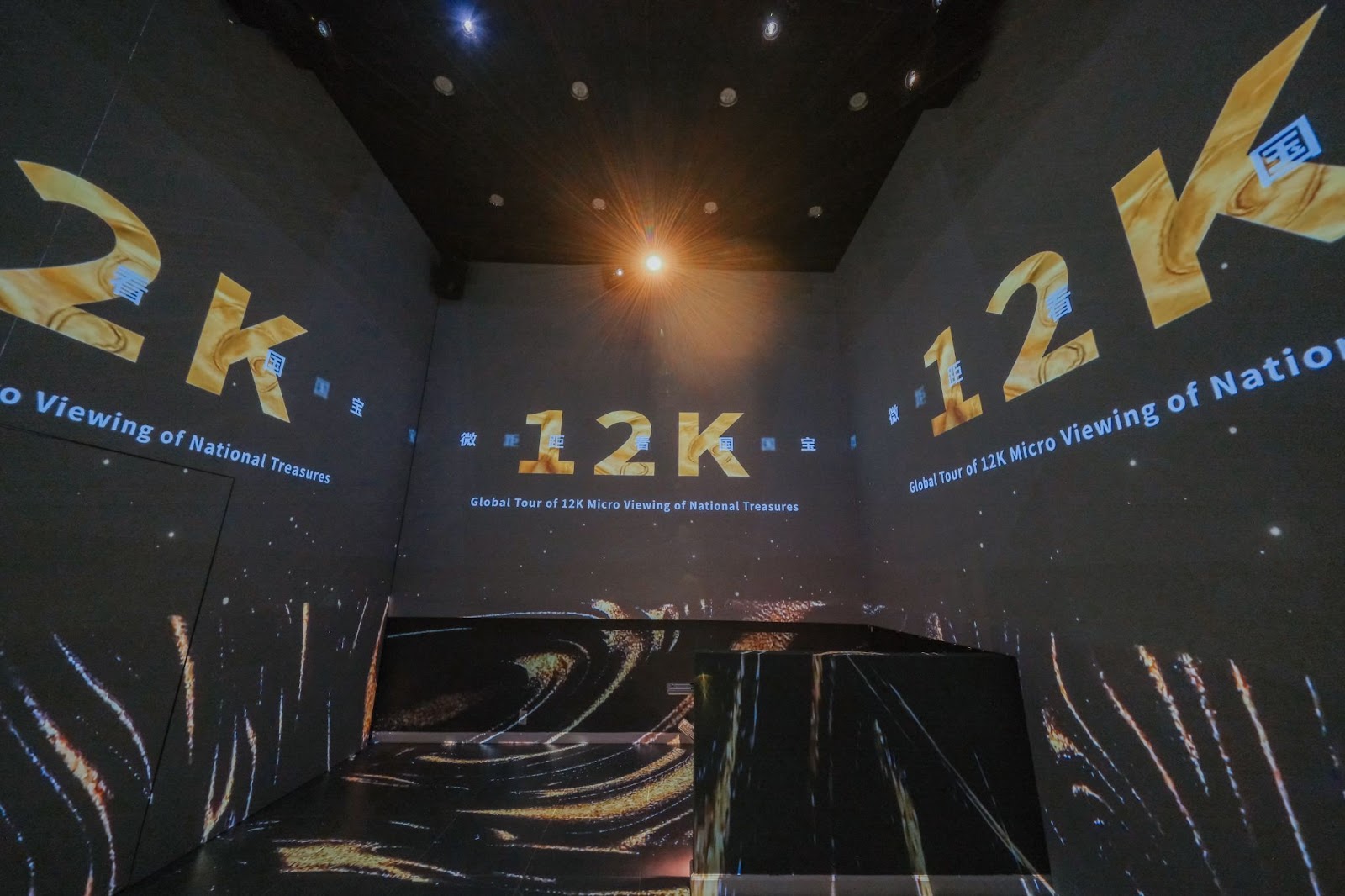
The 12k Digital Hall. Image Courtesy of Memor Museum.
Q: What interactive elements have been added to this exhibition to engage visitors?
Willa: We’ve incorporated several interactive elements. One of the highlights is our VR component, which transports visitors directly to the Sanxingdui archaeological site. Through VR headsets, visitors can explore the dig site in its original setting—a location that remains closed to the general public for preservation reasons. This experience gives a unique, firsthand view of the excavation area, where artifacts like bronze masks and ceremonial altars were discovered, allowing visitors to gain a better understanding of how these relics were unearthed and pieced together from fragments.
Our AI-powered docent “Dui Bao,” for instance, provides information and answers questions, allowing visitors to have a conversational experience with the exhibits. We’ve also created an “archaeology blind box” experience, where visitors can simulate the thrill of excavation as if they were uncovering these ancient relics themselves. There’s also a painting station where visitors, from children to professional artists, can paint Sanxingdui-inspired designs. These interactive activities make the exhibition accessible to people of all ages, fostering a more engaging and memorable experience.
Q: How has the response been to “Sanxingdui Encounter” as it has toured internationally, and what has the New York audience’s reaction been?
Willa: We’ve seen a variety of responses. General audiences are often struck by the clarity and detail they can see with 12K imaging, as it brings them closer than they could ever get in a traditional museum setting. Archaeologists and specialists, on the other hand, have been thrilled with the new research insights the digital technology offers. They’ve remarked on the importance of 12K resolution as it allows for deeper study of the artifacts, revealing features that might otherwise go unnoticed.
The creative community, including artists and designers, have also responded positively. Many have been captivated by the artistic quality of these ancient works, from the bold shapes to the exaggerated features on the bronze masks. We’re delighted to see how the exhibit resonates across different audiences—showing that “Sanxingdui Encounter” is not only an exhibition but a bridge connecting history, art, and modern technology.
In New York, especially, we’ve seen a high level of curiosity from non-Chinese audiences. Sanxingdui’s unique design details and mysterious, alien-like features intrigue viewers, as it doesn’t conform to traditional Chinese aesthetics. The exhibition also addresses the mystery that Sanxingdui lacks a written script, unlike many other civilizations. Audiences are curious, and as they explore, they discover intriguing similarities to contemporary interests. For example, some are drawn to the muscular bronze figure we call the “gym instructor,” who bears a confident smile and large, stylized eyes. The universal appeal of these objects is palpable, and visitors come away with a genuine sense of wonder.
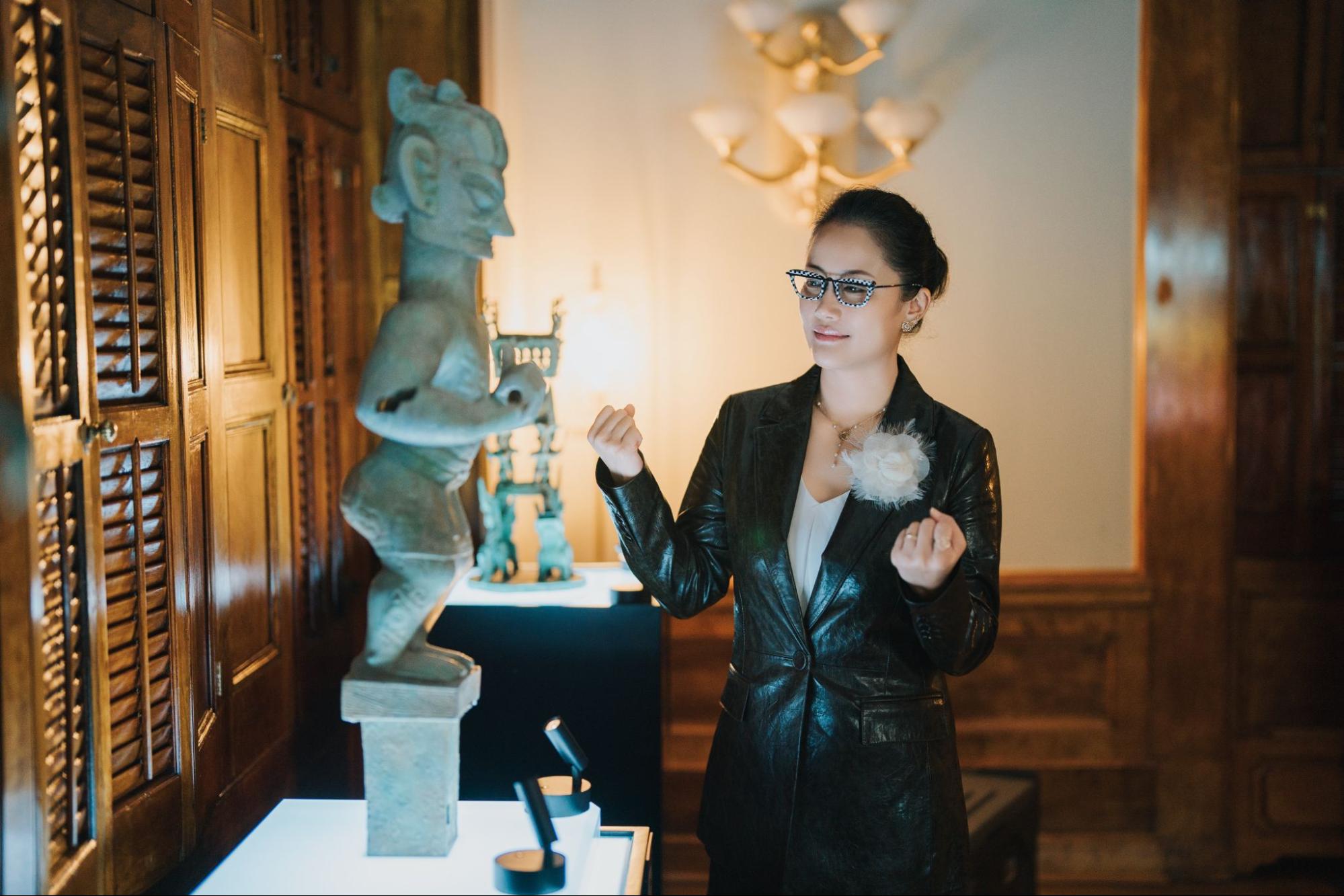
Chief Curator, Willa Ao, in the Floor 3 Exhibition Hall. Image Courtesy of Memor Museum.
Q: As the Chief Curator, how do you see digital exhibitions evolving in museums, especially with the success of “Sanxingdui Encounter”?
Willa: Digital exhibitions will never replace physical artifacts, but they provide a powerful complement. For large, traditional museums with extensive collections, digital elements can enhance the visitor experience and offer additional perspectives. However, for an innovative museum like ours, digital displays are essential. With technologies like 12K and VR, we want to offer more than just visual impact—we want audiences to learn and connect with the content. Exhibitions like “Sanxingdui Encounter” include educational points about Sanxingdui’s place within global and Chinese civilizations, helping visitors gain a deeper understanding of this important heritage site.
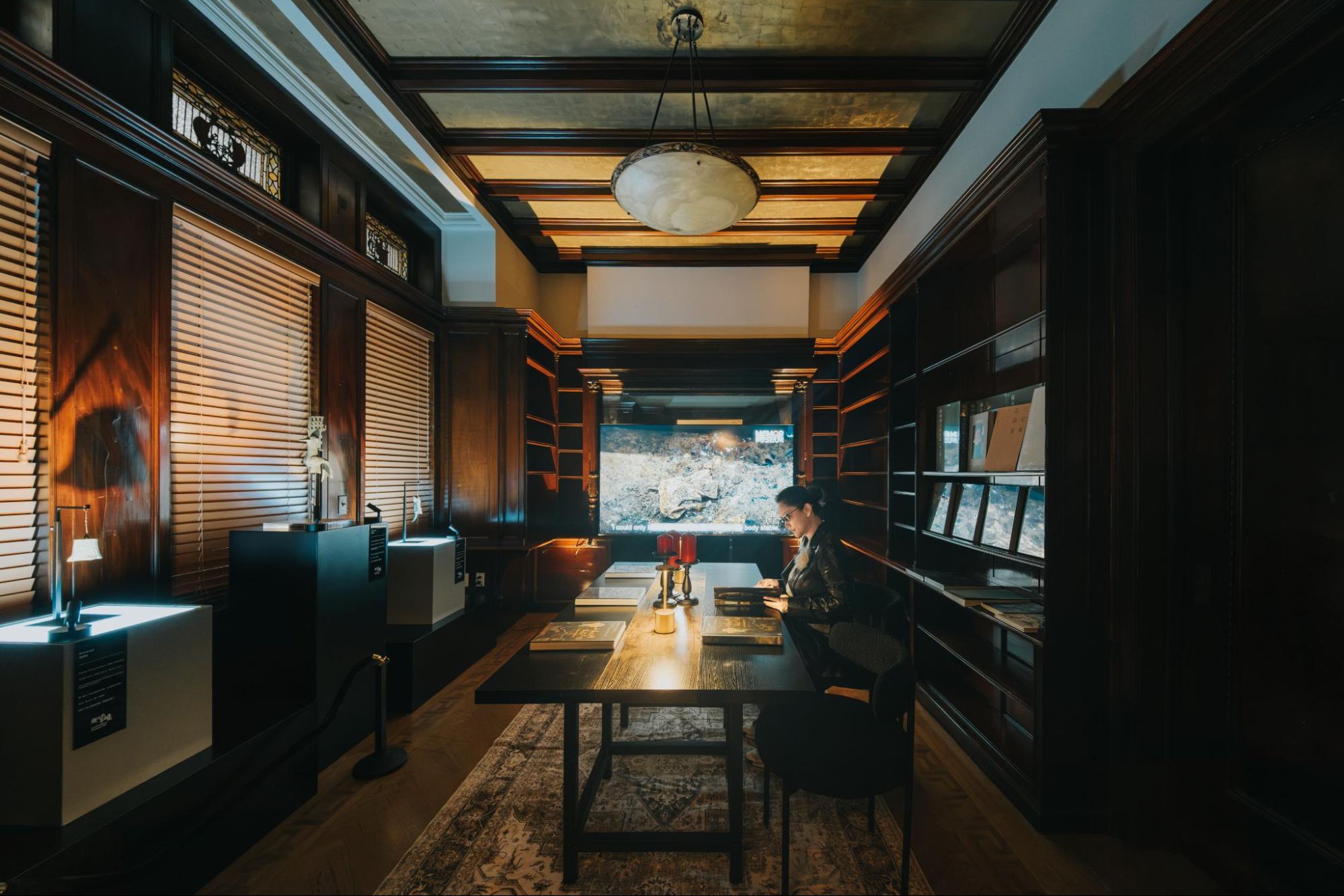
Chief Curator, Willa Ao, in the Floor 2 Reading Room. Image Courtesy of Memor Museum.
Q: What does it mean to you to establish Memor Museum in New York’s Metropolitan Museum Historic District?
Willa: Choosing this location carries a lot of significance for us. We’re deeply committed to cultural preservation, and our museum building itself is over a century old. Its preservation has been a priority, and being in a historical area brings with it an added responsibility. Our location near the Metropolitan Museum of Art also allows us to participate in a renowned cultural neighborhood. It’s a special opportunity to establish a new landmark here in New York and highlight Asian culture, an area that still lacks a dedicated museum presence in this part of the city.
We designed the museum’s layout to protect both the building and its artifacts. Our first floor is open to the public as a digital exhibition space, while the upper floors are reserved for members to maintain an intimate and professional setting. We see this as a private area for cultural and academic exchange, allowing us to preserve both the building’s original structure and our museum’s mission.
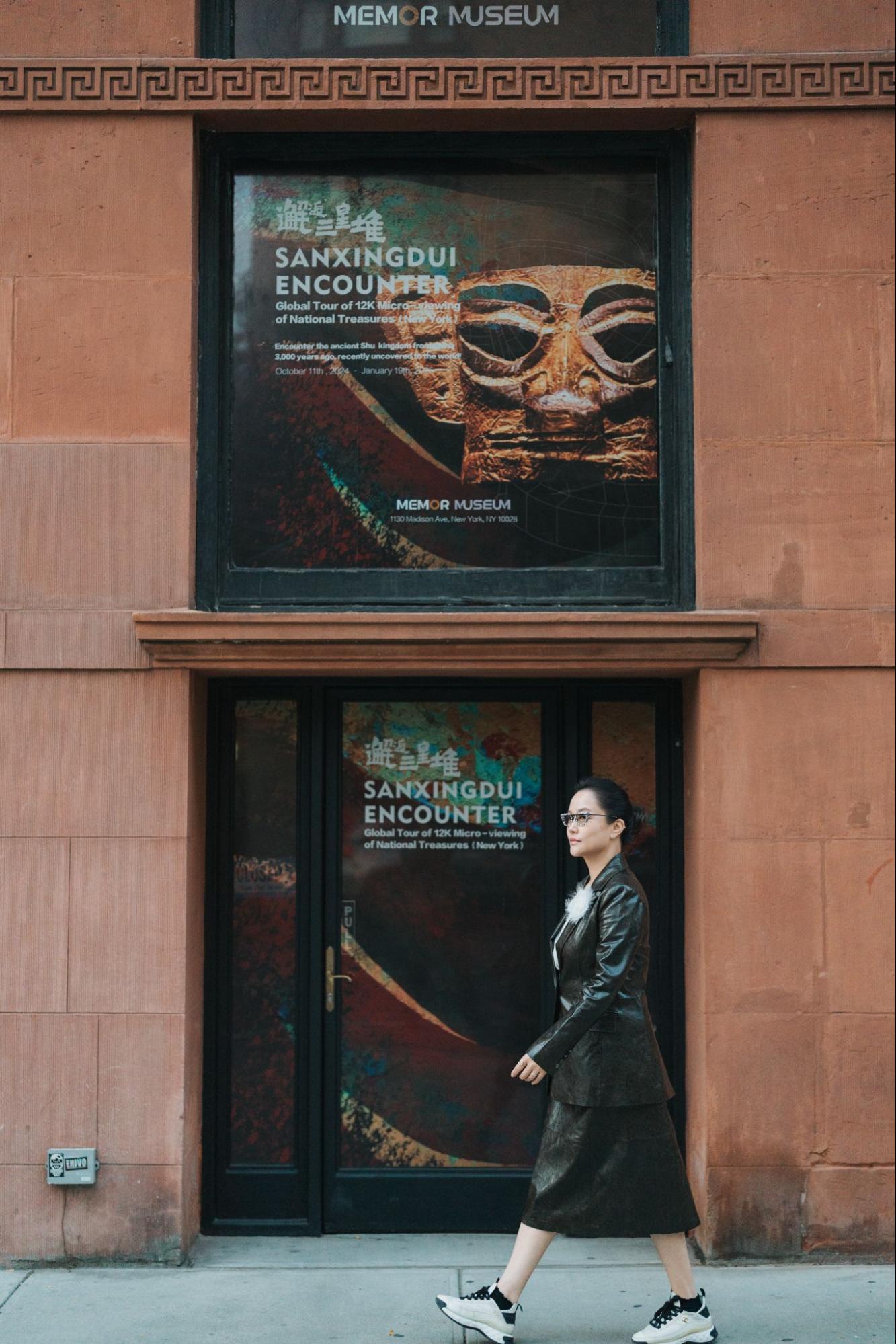
The Facade of Memor Museum (New York). Image Courtesy of Memor Museum.
"Sanxingdui Encounter" is a rare opportunity to step into the world of ancient China’s mysterious Bronze Age “Shu” civilization right in the heart of New York. With exclusive VR experiences, 12K ultra-HD exhibits, 1:1 artifact replicas and interactive elements like AI-guided tours and hands-on archaeology, this exhibition invites visitors of all ages to explore history in a completely new way. Secure your Sanxingdui Encounter tickets today to experience this once-in-a-lifetime exhibition and be part of an unforgettable journey through time.
Memor Museum is committed to sharing Asian culture with a broader audience and plans to bring many more exhibitions like "Sanxingdui Encounter" to New York and beyond, giving audiences a deeper connection to history through immersive and engaging experiences. To learn more about Memor Museum’s upcoming exhibitions and events, please stay tuned via their official website at www.memormuseum.com.
About Memor Museum:
Memor Museum, the organization behind this exhibition, is a global leader in pioneering museum experiences at the intersection of culture and technology. With multiple sites worldwide, it is dedicated to cultural heritage preservation through innovative exhibition planning, immersive and interactive experiences, and a diverse range of activities that bring history to life. The museum complex frequently engages in projects related to artifact preservation and restoration, development of relevant technologies, and the creation of cultural heritage IPs. Memor Museum's commitment to protecting and utilizing cultural heritage ensures that exhibitions like Sanxingdui Encounter remain dynamic, educational, and deeply engaging. Visit them on the Upper East Side at 1130 Madison Ave.
Media Contact
Company Name: Memor Museum
Contact Person: Wennan (Willa) Ao
Email: Send Email
Country: United States
Website: https://www.memormuseum.com/













